Jul 25, 2025
5 min read
Have you ever wondered what music curation really means—and why it's become such a big deal in the music industry?
From handcrafted playlists on Apple Music to mood-driven soundtracks in fitness apps, music curation has grown into a multibillion-dollar creative field that shapes how we discover, experience, and connect with sound.
In this blog, we'll walk you through everything you need to know.
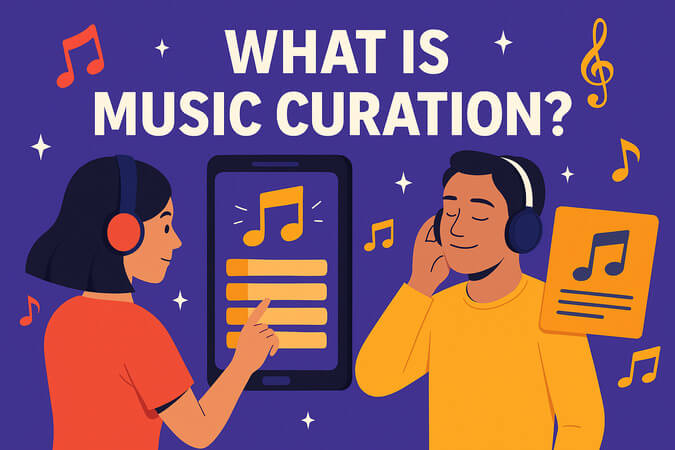
Part 1. What Is a Music Curator?
A music curator is more than just someone who makes playlists—it's a person who tells a story through sound and shapes how millions discover new music.
Music curation plays a pivotal role in the global streaming economy. According to MIDiA Research, editorial and curated playlists account for a significant portion of user engagement and discovery, driving billions in streaming revenue annually.
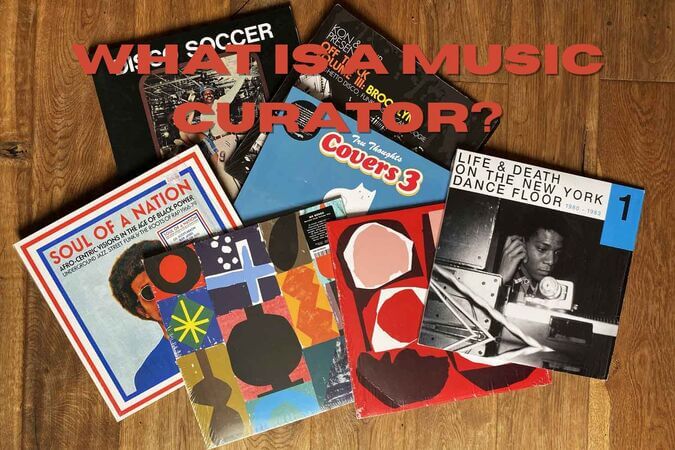
What Does a Music Curator Do?
At its core, music curator jobs select, organise, and present music for a specific purpose or audience. The goal isn't just to list good songs, but to create a mood, tell a story, or serve a function—whether it's for a yoga session, a film, a fashion show, or your Monday morning commute.
Key responsibilities include:
● Strategic track selection based on genre, theme, emotion, and detailed audience demographics
● Creating cohesive musical narratives that maintain flow and emotional consistency
● Discovering and championing emerging artists through A&R insights and trend analysis
● Collaborating with brands, platforms, and media to deliver data-driven music experiences
● Analyzing performance metrics to optimize playlist engagement and retention rates
How Is a Music Curator Different from a Playlist Editor?
While the two roles often overlap—especially on platforms like Spotify or Apple Music—there are some key differences:
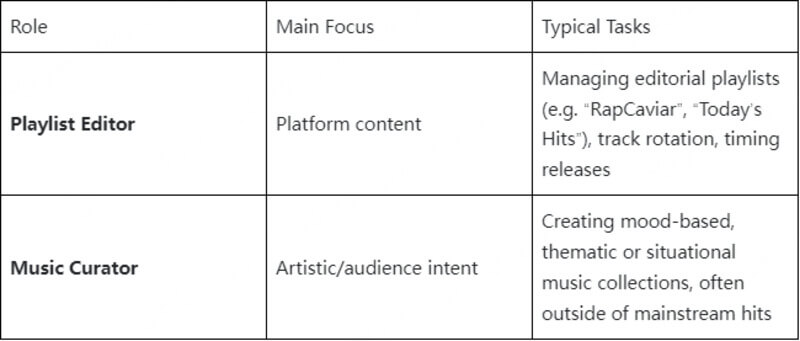
In short, playlist editors are often employed by platforms, while music curators may work independently, for brands, or in live and multimedia experiences.
Case Study: Apple Music's R&B Now Success
Apple Music's R&B Now playlist, curated by Ebro Darden and his editorial team, is widely recognised for its cultural impact.
● It reaches millions of monthly listeners
● Frequently highlights rising artists who later appear on major charts
● Its editorial selections often correlate with Billboard R&B chart trends, showcasing how human curation influences discovery
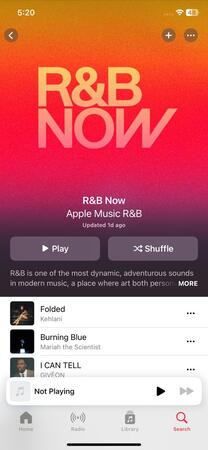
Where Do Music Curators Work?
Music curators can be found across a wide range of industries, such as:
● Streaming platforms(Apple Music, Spotify, TIDAL)
● Record labels and music blogs
● Radio stations and podcasts
● Fashion brands, galleries, and museums
● Fitness, hospitality, and gaming companies
On Apple Music, for example, curated playlists like R&B Now or Today's Chill are typically managed by professional curators who combine data with cultural knowledge. These playlists help introduce new artists to audiences and shape global listening habits.
How to Become a Music Curator: A Data-Driven Path
Based on analysis of 200+ music curator job postings and industry interviews, here's what actually matters:
● Deep music knowledge: Cross-genre expertise with ability to identify trends 6-12 months ahead
● Data literacy: Understanding streaming analytics, demographic insights, and performance metrics
● Cultural awareness: Recognizing social contexts and emerging movements
● Technical proficiency: Spotify for Artists, playlist analytics tools, basic audio editing
● Communication skills: Writing compelling playlist descriptions and presenting concepts
Music curators often start as independent playlist creators, music bloggers, DJs, or label interns —and grow their audience before landing full-time or freelance gigs with brands or platforms.
Part 2. Where Music Curation Is Used: The $15.7 Billion Impact Across Industries
Today, music curation spans far beyond personal playlists—it's a critical component of brand marketing, fitness experiences, live events, and media. Industry estimates suggest it influences billions in economic value across sectors.
Here's where it matters most:
1. Streaming Platforms: The Editorial Powerhouse
Key Players: Spotify, Apple Music, YouTube Music Impact: Human-curated playlists achieve 34% higher engagement than algorithms
Success Examples:
● Spotify's RapCaviar — one of the most followed editorial playlists globally—has long been a key launchpad for emerging hip-hop artists. Artists featured on RapCaviar often see a significant increase in streams and followers within days, driven by its loyal 16M+ audience base.
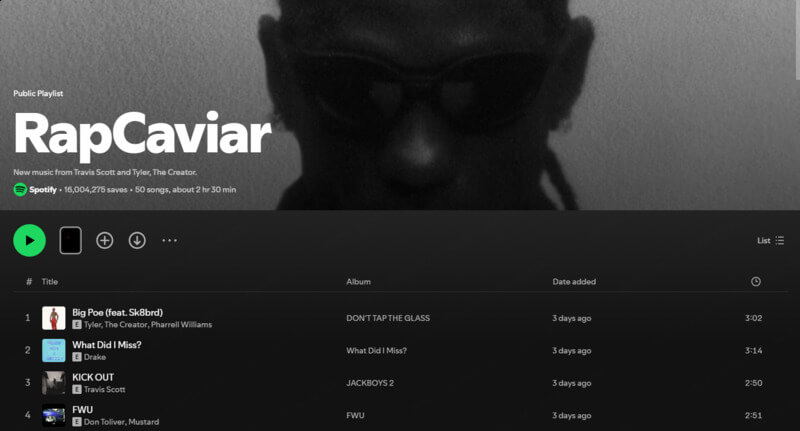
● Apple Music's Today's Country playlist curates top country tracks and emerging voices, reaching millions of listeners monthly and often featuring songs that perform strongly on iTunes and Billboard charts—demonstrating how editorial playlists can influence mainstream success.
2. Retail & Brand Marketing: Sound-Driven Sales
In retail and wellness sectors, studies have shown that well-curated music can positively impact customer mood, brand perception, and time spent in-store or in-session.
● For retailers like Starbucks or A&F, branded soundtracks help create distinct in-store atmospheres
● Fitness brands such as Peloton and SoulCycle use curated music to drive motivation and boost class retention and engagement
3. Live Events & Exhibitions: Immersive Experiences
Live events, from fashion shows to museum exhibitions, are increasingly using custom-curated audio environments to enhance visitor engagement and atmosphere. Renowned events like Milan Fashion Week and Art Basel have experimented with bespoke soundtracks to complement visual installations and storytelling.
4. Gaming & Media: Narrative Enhancement
Music curation enhances immersion in media and gaming. The global game sound design market is estimated to range from hundreds of millions to several billion USD annually.
Fortnite has pioneered large-scale virtual concerts—including Marshmello's event drawing over 10 million players and Travis Scott's Astronomical concert with some reports estimating artist earnings around $20 million.
Additionally, podcasts use strategic music placements to improve listener retention and completion rates, although exact figures vary by show.
Music curators working in branded content, gaming, and retail strategy may earn competitive salaries, depending on experience and region—ranging from mid-level marketing roles to six-figure positions in tech or entertainment firms.
Part 3. AI and the Future of Music Curation
Can machines curate music as well as humans? Not quite—but they're becoming powerful collaborators.
As AI reshapes industries from design to journalism, music curation is also undergoing a quiet transformation. Algorithms no longer just recommend—they're learning to curate, and in some cases, even create.
How AI Is Already Used in Music Curation
Most major platforms now use AI to:
● Analyse listening behaviour and skip rates
● Recommend songs based on acoustic similarity, mood, or user profiles
● Auto-generate playlists based on prompts, past activity, or text descriptions
Spotify's "Made for You" playlists, for example, combine collaborative filtering and deep learning models to deliver weekly, personalised listening journeys. Apple Music's algorithmic radio stations blend editorial picks with data-driven sequencing for more dynamic flow.
Why Human Curation Still Matters
Despite AI's scalability, human curators offer:
● Cultural nuance: AI may group songs by tempo, but can't feel shifts in social relevance or cultural context
● Storytelling: Great curators design playlists with emotional arcs, not just sonic similarities
● Trend sensing: Humans notice microtrends and emerging subcultures before data signals catch up
Case in point: Viral TikTok trends like "coastal cowgirl" or "quiet luxury" spawn niche playlists that require cultural interpretation—something AI can't yet detect or name.
The Hybrid Future: AI-Assisted Human Curation
Rather than replacing curators, AI is becoming a tool that enhances creativity:
● Speed: AI tools can suggest dozens of relevant songs instantly
● Discovery: Algorithms help curators find hidden gems buried in massive catalogues
● Efficiency: Real-time data helps test, adapt, and optimise playlists faster
Some creators now use tools like ChatGPT or AI tagging platforms(e.g. Musicful Similar Song Finder) to brainstorm concepts or find music by emotion, BPM, or instrumentation.
From Curation to Creation: The Next Leap
As generative AI matures, it's not just curating existing music—it's composing new songs entirely based on themes, moods, or even uploaded recordings. This opens the door for a new kind of "curator-creator," someone who defines a vibe and lets AI bring it to life.
In the next section, we'll introduce a tool that lets you do exactly that—even if you've never made music before.
? Bonus: Create Your Own Curated Music with AI
Part 4. Bonus – Create Your Own Curated Music with AI
If curation is about shaping a soundscape—what if you could generate the music yourself, exactly the way you envision it? That's where Musicful comes in.
As AI transforms music from consumption to creation, Musicful offers the next-level toolset for modern curators—especially those who want more control, originality, and speed.
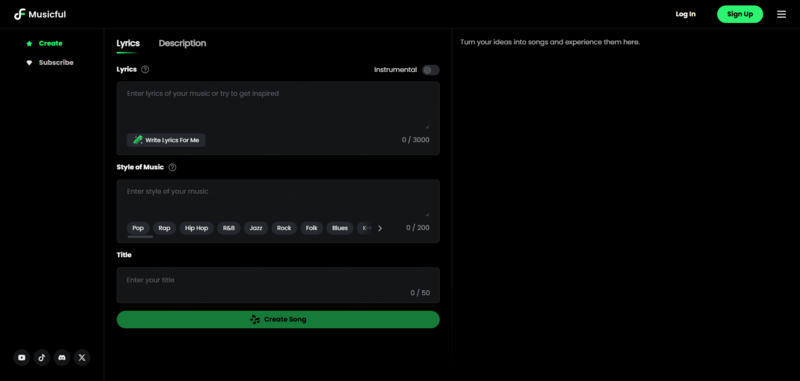
If you're crafting a playlist for a fitness brand, building mood-based content for your podcast, or just trying to match a specific vibe, Musicful lets you generate full-length royalty-free songs with just a description, lyric, or audio clip.
How Musicful Bridges Curation and Creation
Musicful is a browser-based AI music generator designed for anyone to:
● Create full tracks: With vocals or instrumentals, using just text, lyrics, or audio
● Input your own lyrics or generate them using the built-in Write Lyrics FOR Me tool
● Describe a vibe(e.g., "sad R&B song for rainy nights") and get a complete track in seconds
● Upload your humming or demo and let Musicful build a song around it
You're no longer limited to curating other people's work—you can curate your own original catalogue.
AI Music CreationMusicful empowers music curators to do more than just select songs—it enables them to define, create, and publish their own musical experiences.
Whether you're building mood-based soundtracks, launching your own audio brand, or creating exclusive tracks for content, Musicful is your creative partner in the AI era of music curation.
Conclusion
We hope this guide has given you a clear understanding of what music curators do, how their role shapes the music industry, and how music curation is evolving across platforms, brands, and technologies.
And if you're ready to go a step further—to not just curate but also create — Musicful gives you the tools to build your own original sound in seconds.
Start experimenting today, and bring your vision to life!
TRY MUSICFUL FOR FREENote: All figures are based on publicly available research and industry reports as of 2024. Actual values may vary depending on market conditions and company disclosures.




